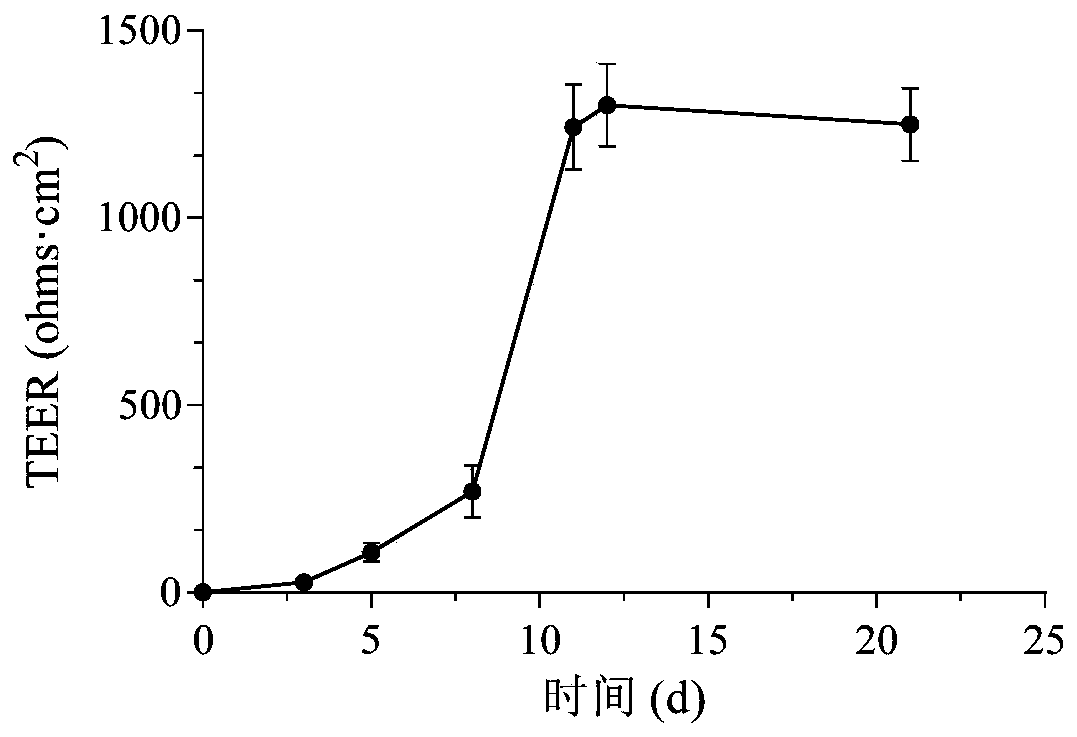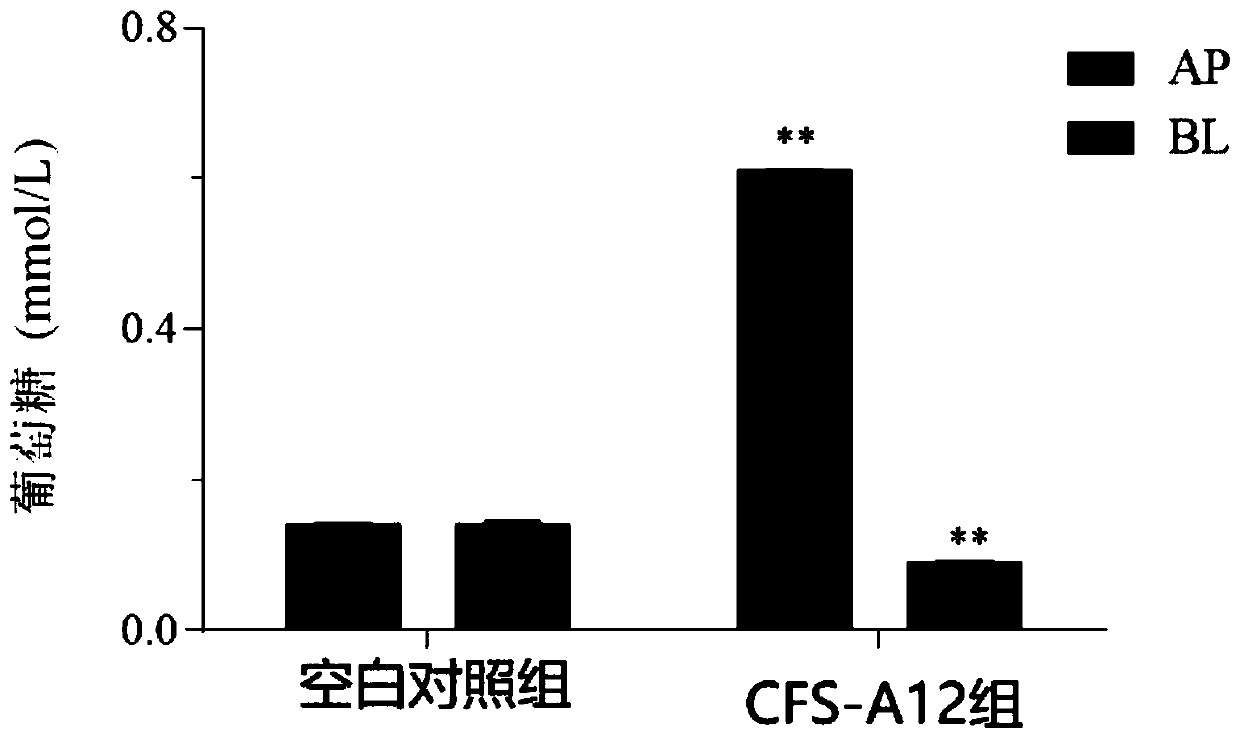Bifidobacterium animal and application thereof in controlling diabetes or hyperlipidemia, particularly in weight gain or obesity
A technology of animal bifidobacteria and bacteria, applied in the field of microorganisms, can solve the problems of fermentation agent monopoly, less application, and unexplained mechanism of action, so as to enhance functionality, relieve insulin resistance and leptin resistance, and improve body sugar. The effect of tolerance level
- Summary
- Abstract
- Description
- Claims
- Application Information
AI Technical Summary
Problems solved by technology
Method used
Image
Examples
preparation example
[0068] Bacteria preparation
[0069] 1. Inoculate the activated 2-generation Bifidobacterium animalis A12 into the improved MRS liquid medium, and culture it anaerobically at 37°C for 12 hours. After the cultivation, centrifuge the culture system at 8,000g at 4°C for 10 minutes to collect the supernatant. Filter through a 0.22 μm filter membrane, adjust the pH to 6.5, and obtain the fermentation supernatant.
[0070] 2. Inoculate the 2-generation activated Bifidobacterium animalis A12 and Bifidobacterium animalis BB12 into the modified MRS liquid medium, culture anaerobically at 37°C for 12 hours, and centrifuge the culture system at 8,000g at 4°C for 10 minutes to collect the bacteria body. Wash 3 times with sterile PBS buffer (pH 7.4), resuspend in PBS solution, adjust the number of cells to 10 9 / mL to obtain A12 and BB12 live bacterial suspensions.
Embodiment 1
[0072] This example is used to illustrate the establishment of the Transwell cell model and the inhibitory effect of the fermentation supernatant of Bifidobacterium animalis A12 on glucose transport
[0073] 1. Inoculate Caco-2 cells on a 12-well Transwell chamber (membrane pore size 0.4 μm, growth area 1.12 cm 2 ), add 2×10 5 Each cell / mL suspension was 500 μL, and 1.5 mL of cell culture medium was added to the basal side (lower chamber, BL side), and the medium was changed once a day. When the cells grow and differentiate for up to 21 days, the transmembrane electrical resistance (TEER) exceeds 500Ω·cm 2 When , cell fusion is considered complete, and the Transwell cell model can be used for transport experiments.
[0074] The result is as figure 1 shown. TEER increased rapidly in the first 11 days and reached a maximum on the 12th day (1300±110.82Ω cm 2 ), indicating that Caco-2 cells had formed a dense monolayer structure. 12-21 days after cell inoculation, TEER incre...
Embodiment 2
[0081] This example is used to illustrate the effect of in vitro α-glucosidase and simulated digestive tract of animal bifidobacteria
[0082] 1) Preparation of cell contents
[0083] The strains (A12 and BB12) were inoculated in the improved MRS broth with an inoculum size of 2% by volume, cultured anaerobically at 37°C for 12 hours, and passed to three generations for future use. Centrifuge the activated bacterial liquid at 6 000×g at 4°C for 10 min, collect the supernatant, adjust the pH to 6.0, and filter the filtrate through a 0.22 μm filter membrane to obtain the fermentation supernatant; buffer the bacterial cell precipitation with sterile PBS solution (pH7.4), washed 3 times, resuspended in PBS solution, and adjusted the concentration of bacteria to about 1×10 9 CFU / mL, and after crushing with a beadbeater for 30 seconds, centrifuge at 12 000×g for 10 minutes, and collect the supernatant as the cell content.
[0084] 2) Determination of α-glucosidase
[0085] In a 2...
PUM
 Login to View More
Login to View More Abstract
Description
Claims
Application Information
 Login to View More
Login to View More - R&D
- Intellectual Property
- Life Sciences
- Materials
- Tech Scout
- Unparalleled Data Quality
- Higher Quality Content
- 60% Fewer Hallucinations
Browse by: Latest US Patents, China's latest patents, Technical Efficacy Thesaurus, Application Domain, Technology Topic, Popular Technical Reports.
© 2025 PatSnap. All rights reserved.Legal|Privacy policy|Modern Slavery Act Transparency Statement|Sitemap|About US| Contact US: help@patsnap.com



